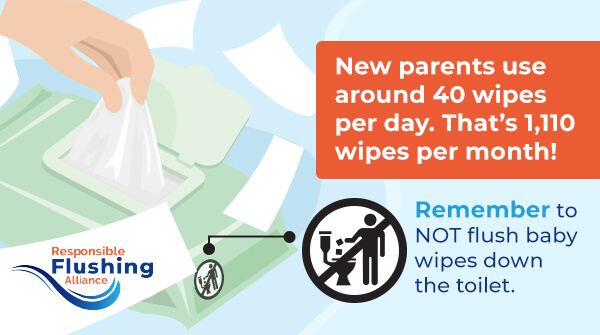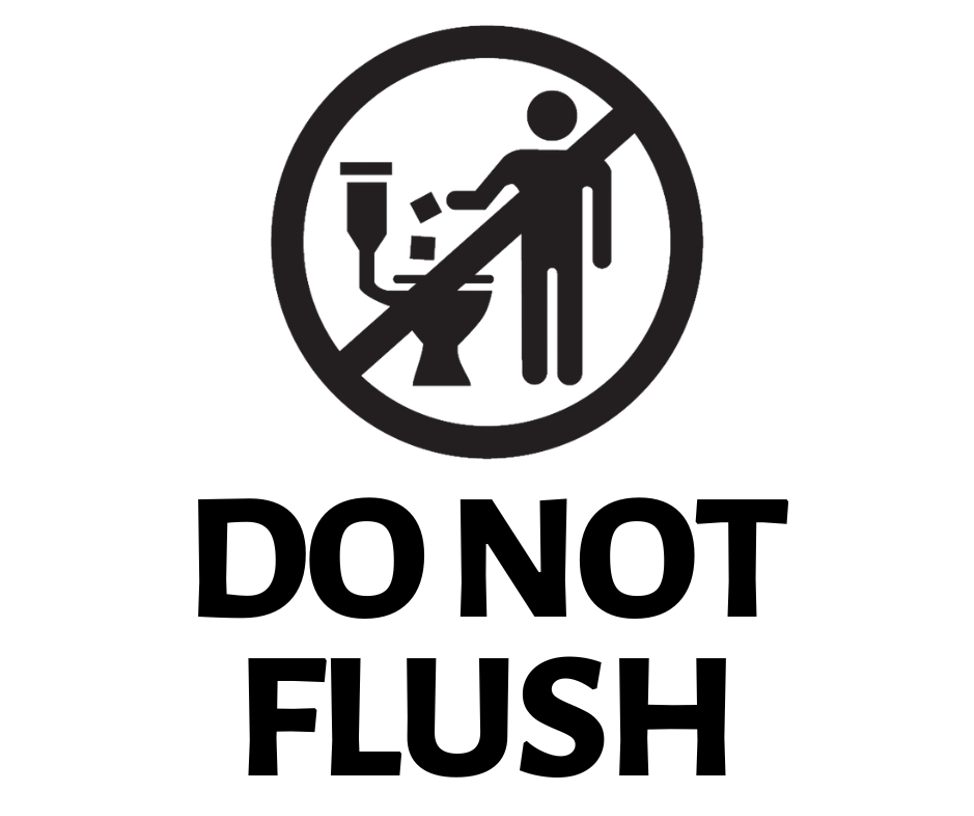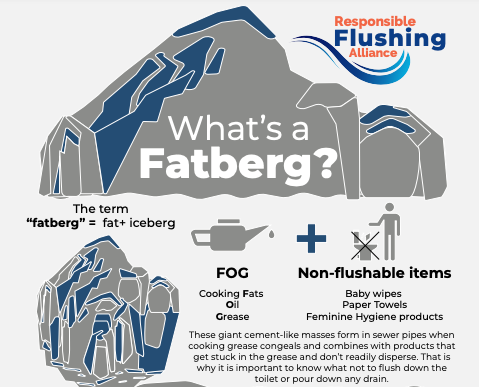Flush Smart to protect your watershed!
Yes! You read correctly. In this toolkit, Grades of Green has partnered with the Responsible Flushing Alliance, to help you learn how to Flush Smart (yup – we’re talking toilet flushing!) and how this small action has a big impact on our watersheds. What’s a watershed? Water that collects on or under an area of land and then flows into a waterway, such as a river or lake, or ocean is called a “watershed”.
Launch this toolkit to encourage your classmates, friends, teachers, and parents to limit water pollution and keep our watersheds healthy.
Want to use this toolkit in Español? Click here!
Want to use this toolkit offline? Click here for a PDF!

Toolkit Details


NGSS
This toolkit address the following Science and Engineering Practices (SEPs) within the Performance Expectations of NGSS for Grades: K-2 and 3-5
- Asking Questions and Defining a Problem
- Planning and Carrying out Investigations
- Analyzing and Interpreting Data
- Using Mathematics and Computational Thinking
- Constructing Explanations and Designing Solutions
- Obtaining Evaluating, and Communicating Information
Learning Objectives
- Analysis
- Students will analyze their daily habits to see where they can reduce their waste, energy, and water usage.
- Project Management
- Students will keep track of how many resources they are saving.
- Students will practice leadership skills by delegating tasks to each other.
- Evaluation and Assessment
- Students will track and evaluate the impact of their project.
Why It’s Important
Pollution from flushing items that do not belong in our toilets is threatening pipes, sewers, and waterways. The water that we use for our daily activities comes from different bodies of water, but human activities have led to many of them becoming very polluted. Along with pollution, what we flush and put in our sinks can lead to clogged pipes which can cost millions of dollars to repair.
What You Will Accomplish
Students will run a public action Flush Smart (#FlushSmart) campaign to help their school and community keep pipes, sewers, and waterways clean. This will protect the health of their watershed and reduce damage to their wastewater infrastructure.
Educator Project Plan
Follow the steps below to set up a successful Flush Smart Campaign at your school! Need help? Contact us!
Track your metrics and submit your impact after implementing this toolkit. Your feedback helps keep our programs free for all across the globe.
Determine Participants
Use the Flush Smart Sign Up Sheet to have participants sign up.
- A Student Group such as (a club, before/after school program, non-school organization)
- A whole class
- The whole school
- Organize Student Leaders – Create positions, roles, and committees such as researchers, presenters, recorders, promoters, etc.
Why Should You Flush Smart?
The resources provided below can be shown as a slideshow or printed out as individual worksheets for students to review.

To Flush or Not to Flush?
According to the Responsible Flushing Alliance, most wipes, 93% in fact, are not meant for flushing down the toilet. These wipes are called non-flushable wipes. They can cause harm to sewer systems and infrastructure because they are made with long, often plastic fibers and are not meant to dissolve in water. That’s why it is important to look at the package and if you see the  symbol, toss that wipe in the trash and never the toilet. Non-flushable wipes include all baby wipes, cleaning wipes, disinfecting wipes, and makeup removal wipes, just to name a few. Wipes that are specifically called flushable (about 7% of all wipes) are made of short, natural plant-based fibers and are made to dissolve in water like toilet paper. But, if you are unsure of what to do, it is always better to toss a wipe in the trash rather than the toilet. [1]
symbol, toss that wipe in the trash and never the toilet. Non-flushable wipes include all baby wipes, cleaning wipes, disinfecting wipes, and makeup removal wipes, just to name a few. Wipes that are specifically called flushable (about 7% of all wipes) are made of short, natural plant-based fibers and are made to dissolve in water like toilet paper. But, if you are unsure of what to do, it is always better to toss a wipe in the trash rather than the toilet. [1]

Know Before You Go
The Clean Water Act of 1972 just turned 50 years old, yet over 50% of the lakes and rivers in the United States are labeled “impaired”. This means that the water is too polluted for us to swim, drink, or participate in any other fun activity with these water sources. [2] According to the Environmental Protection Agency, 850 billion gallons of raw sewage is dumped into waterways across America every year. This is about the same amount of water the Mississippi River carries into the Gulf of Mexico annually. [3]

Think Before You Flush (or Drain)!
The National Association of Clean Water Agencies (NACWA), states that it costs over $400 million dollars to fix and clean up wastewater treatment equipment when we flush non-flushable wipes in the toilet. If our sewage systems get clogged or leak, it can pollute our groundwater and even flow back into our homes affecting the safety of our community. When we flush smart, we save our water, time, health, and money. [4]
Why Water is an Environmental Justice Issue
Millions of people around the world do not have access to safe, clean water for sanitation, drinking, or other activities. All over the world, including in the United States, there are communities that only have polluted water to drink, bathe, and play in, which makes them sick. Typically, this polluted water supply occurs in communities of color and/or lower income communities. Their governments might not have laws in place to protect the health of their environment or they might not hold polluters accountable for the damage they cause. An example of this injustice is in Flint, Michigan – a low income community that started to get water from their local river. The waterways were very polluted leading to unsafe water going into the homes of the community causing illness.
Watch these Short Videos to Learn More on How to Flush Smart
Think About It!
Pre-Activity Questions
- What is “responsible flushing”?
- How does polluted water affect the health of humans and the environment?
- Where does water go when it leaves your school or home?
- What are some ways you can prevent clogged pipes and water pollution in your community?
Take Action: How to LAUNCH a Flush Smart Campaign
Lead students through the “Flush Smart Campaign” activity with guided instructions. Check out “Pro Tips” for additional help.
1. Decide Who is Participating and Assign Roles
Who is on your Campaign team? What roles will each student have? Use the Flush Smart Sign Up Sheet and determine who and how many students/staff are participating.
- Researchers: Researchers will gather information for the campaign
- Student Educators: Educators will inform fellow students how and why they should flush responsibly and protect their water resources.
- Marketers: Marketers will create content such as fliers about picking up trash and smart flushing habits.
- Notetaker: Notetakers will record data from students.
2. Choose a Target Audience
Who do you want to reach with your Flush Smart and Watershed protections campaign?
- A Class
- A Grade Level
- The Whole School
- Your Community (this can include your school/parents/other residents in your community)
3. Gather Your Materials and Design Flyers
Before you start protecting your watershed with responsible flushing, you’ll need to start gathering your materials. This can include the following:
- Pencils, markers, paper, tape
- Printable flyers on responsible flushing (see resources at the bottom of this toolkit) and protecting your watershed
- Create your own flyers and call out items that should not be flushed:
- Non-flushable wipes
- Paper towels
- Tissues
- Cotton Swabs
- Floss
- When in doubt – throw it out!
Have “marketer” students create flyers to post around campus announcing your responsible flushing and watershed protections campaign and suggested actions everyone can take.
You can use websites like Canva or Google Slides to create your flyers. Include information about the benefits of a healthy watershed and clean water habits.
You can also use infographics and slides from this toolkit.
Design your own posters – you can even hold an art competition!
4. LAUNCH Your Flush Smart Campaign
It’s time to launch your Flush Smart campaign! Please use the resources below to educate your peers and community about ways to keep pollution out of our waterways. You may use one or all of these:
- Have Educator Students walk around campus visiting classrooms to inform other students on the benefits of protecting your watershed and examples of smarter habits to improve water quality.
- Use our Protect Our Watershed Walking Assembly Script as a reference.
- Customize letters and other documents to parents, students, and teachers
- Share this Information about the differences between flushable and non-flushable wipes
- Read through the Flush Smart Activity Book
- Pledges – Use a free online platform such as Change.org or MoveOn.org to collect pledges from Students, Parents, Teachers, and Staff.
- Post your signs and flyers around campus.
- Do Not Flush and Pour (Responsible Flushing Alliance)
- Do Not Flush and Pour –Espanol (Responsible Flushing Alliance)
Spread Out Your Campaign: Your Campaign can be spread out over the course of one month, one semester, or the whole school year! Depending on what timeline works best for you and your students.
Create a Competition: Hold a contest to see which class on campus returns the most parent pledges! Incentivize the winning class with a prize such as a pizza party from a local vendor or gift cards/coupons!
Be Sure to be Thankful: Thank your schoolmates, teachers, staff, and parents for helping you keep your waterways clean from pollution.
5. Track Your Impact
At the end of your campaign, use the Flush Smart Tracker to determine the number of water friendly actions you and your community took, including how many people you educated and how many pledged to flush responsibly.
Reflection Questions
How’d It Go?
- Did participating in this campaign change the way you/your team view water? How?
- How will this campaign change your future flushing habits?
- What was the most interesting or surprising fact that you learned from this lesson?
- What are some other ways you can prevent water pollution?
Report Students’ Impact
Congratulations!! You’ve implemented Flush Smart! Don’t let all that hard work go unnoticed. Submit your results by clicking the green button below.
Project ongoing? No problem! Let us know what you’ve done so far.
By reporting your impact, Grades of Green can:
- CELEBRATE and elevate your students’ hard work and success.
- Offer our programs FREE for all students across the globe.
- AWARD stipends and certificates to hard-working educators and students.
Please take a few minutes to submit your results. Thank you!
Provided Resources
- Flush Smart Sign Up Sheet
- Flush Smart Walking Assembly Script
- Flush Smart Tracker
- Flush Smart Presentation
- Flush Smart Wrap Up Form
- Flush Smart PDF Toolkit
- Toolkit Resources – Google Drive Folder
Congrats on completing the Flush Smart Eco-Toolkit!
Did you enjoy this toolkit? Find your next project here!